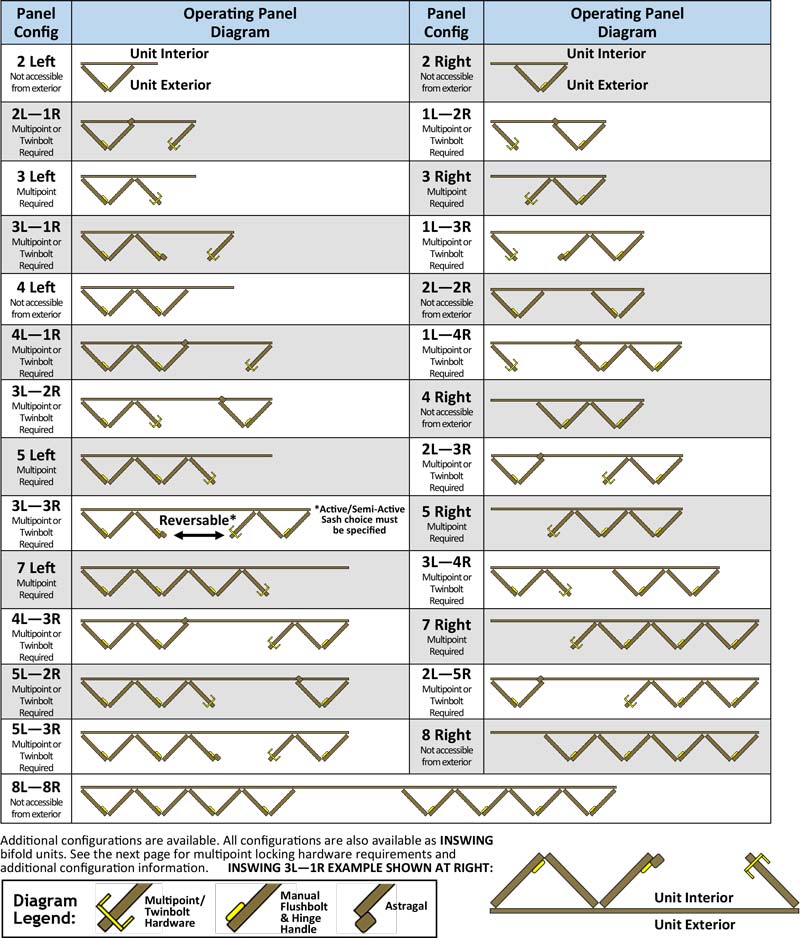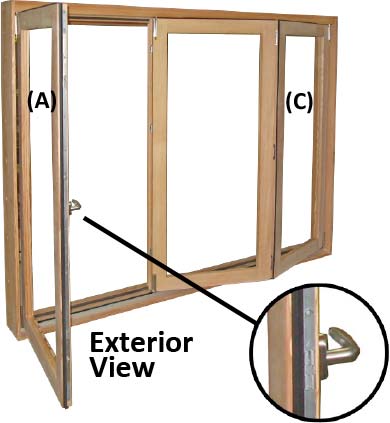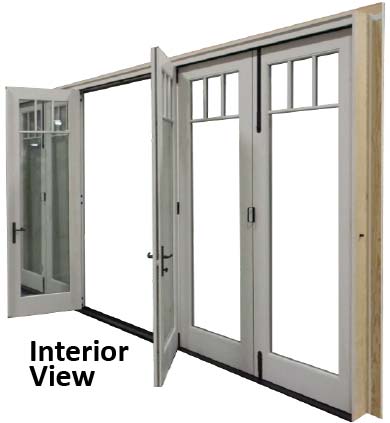Bifold Window Configurations

Bifold Window Configurations
The diagram below shows common OUTSWING bifold window configurations. Due to the nearly limitless configurations available, if you have any questions please reach out to us at info@parrettwindows.com for guidance.

"3 Right" Outswing Bifold Configuration

"4 Left" Outswing Bifold Configuration

"1L - 2R" Outswing Bifold

Bifold windows and doors can be ordered with or without a handle to the unit exterior depending on your needs for accessibility and security.
"3L - 3R" Inswing Bifold Door

Bifold window and door units are very similar in overall unit operation.
